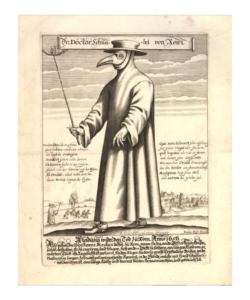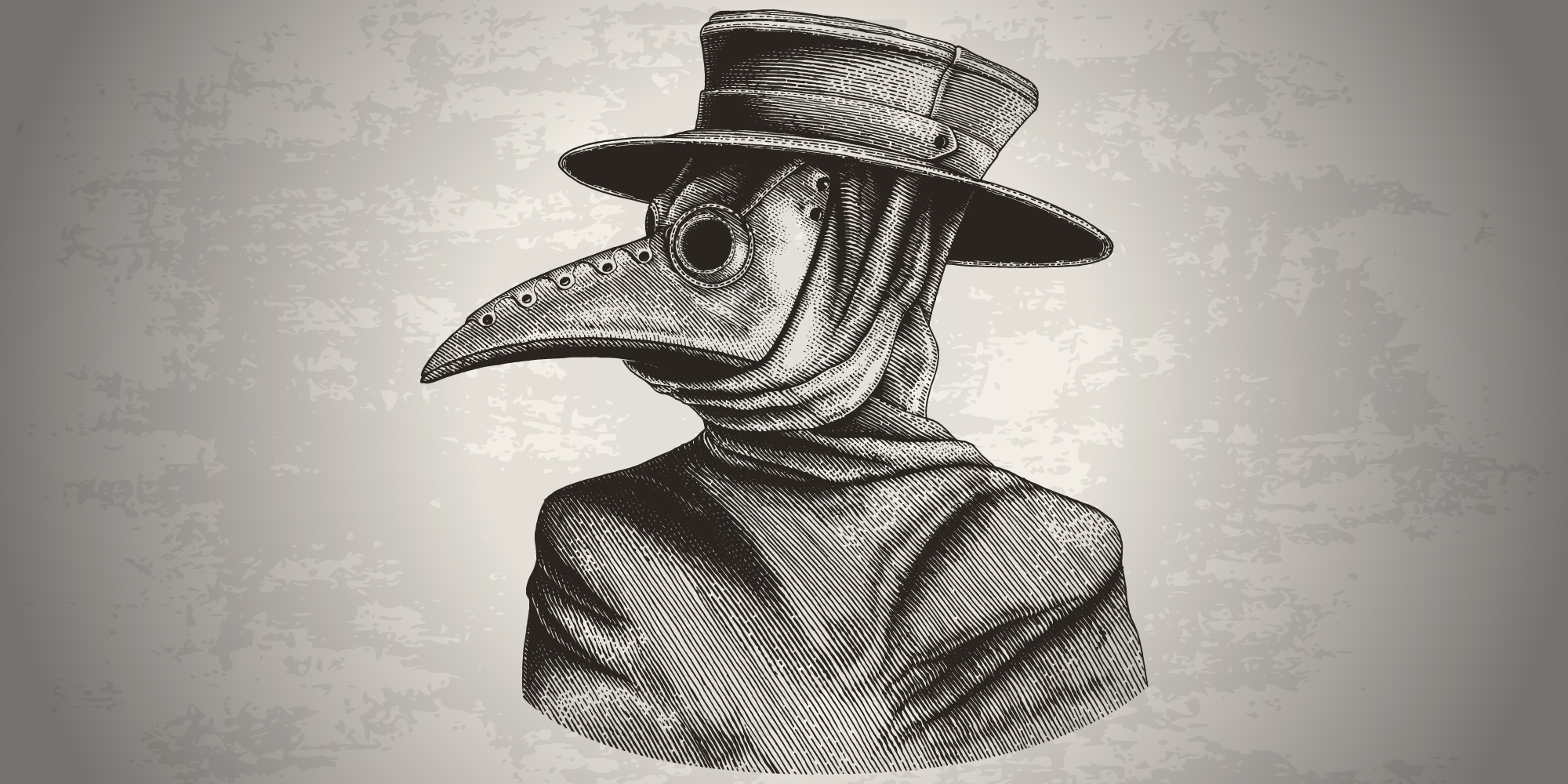MRIGlobal’s Commitment to Laboratory Best Practices
The Plague Doctor, a 16th century picture, with broad-brimmed hat, hands covered with long, curving fingernails, body covered with a waxed robe, mask with goggled eyes, and a bizarrely pointed beak portrays a striking and fearsome appearance. Despite the unusual and rather fearsome appearance, the Plague Doctor’s personal protective equipment (“PPE”) is an early example of biosafety measures taken by physicians in the 16th century to protect themselves against pathogens while safely caring for ill patients.
We’ve come a long way since then. October is Biosafety and Biosecurity Month, an annual awareness campaign developed to educate, raise awareness, and promote best practices in biosafety and biosecurity within the scientific and healthcare communities and among the general public. To learn more about biosafety and biosecurity, we spoke with Ami Patel, Senior Biosafety and Surety Officer, MRIGlobal.
First, what is the difference between biosafety and biosecurity?
The term biosafety refers to practices designed and implemented to protect researchers, the community, and the environment from unintentional release of, or accidental exposure to, infectious agents and or toxins. Biosafety is achieved through a combination of laboratory best practices, training, use of safety equipment, and specifically designed laboratories and buildings.
The term biosecurity refers to measures implemented to protect both infectious agents and toxins; and measures taken to prevent unauthorized possession, intentional or accidental loss, theft, release, or misuse of that biological material and information related to it.
Why are biosafety and biosecurity so important?
Biosafety and biosecurity are essential components of responsible research, ensuring the safe handling and containment of biological materials and the protection of individuals, communities, and the environment from potential threats. At MRIGlobal, biosafety and biosecurity are critical and essential components of all projects involving infectious agents and toxins. Successful implementation of these components is accomplished using a combination of facility design and engineering controls, risk assessment, training and education, waste management, access control, incident response, among others.
What is the history of biosafety?
A concrete timeline for the evolution of biosafety is not clearly defined. The notion of a risk to human health when handling pathogens became clear in the late 1800s when scientists started experimenting with the vaccines. The need for biosafety measures to prevent the spread of infectious diseases then became apparent in the late 19th and early 20th centuries. Early containment measures, such as those used during the 1918 influenza pandemic, included basic isolation and quarantine of patients. In the last century, during WWII and through the Cold War, concerns about bioweapons led to the establishment of stricter containment practices and the development of specific guidelines, regulations, and standards for biosafety and biosecurity. The emergence of infectious diseases such as HIV/AIDS, SARS, Ebola, and more recently SARS-CoV-2, has further highlighted the importance of high containment laboratories and with it, adherence to biosafety and biosecurity measures to ensure a safe environment to support global health.

Are there historical references to biosafety that people might be familiar with?
One of the earliest references to biosafety and the use of personal protective equipment (PPE) is documented in Paulus Furst’s c. 1656 engraving of the Plague Doctor, also known as Doctor Schnabel von Rom. As described above from Furst’s picture, the “PPE” was intended to protect physicians while caring for ill patients. This included those who were impacted by what is commonly called the Black Death, an outbreak of plague responsible for causing more than 50 million deaths in Europe between the 13th and 17th century. While the PPE protected the physicians, the beak was stuffed with fragrant herbs or sprinkled with perfume to combat the stench of death. They used a wooden cane (with an hourglass) to keep a certain distance from the patients, point out areas requiring attention, and examine patients without touching them. The hourglass is thought to show the amount of time spent with patients in general and may symbolize the passage of time, i.e., death.
What measures does MRIGlobal take to ensure biosafety and biosecurity in our facilities, and for our researchers, employees, and communities?
The staff and leadership at MRIGlobal adhere to best practices in biosafety and biosecurity not only to meet the regulations and compliance of local, state, and federal agencies, but also because it’s the right thing to do for our researchers, communities, and the environment. MRIGlobal uses a multi-prong approach including, but not limited to, facility and laboratory design, use of containment equipment in laboratories, safe methods of storage and manipulation of infectious materials, access restrictions, trainings, and recruitment of subject matter experts to lead the biorisk management programs.
GETTING STARTED AT MRIGLOBAL
Contact MRIGlobal to further understand our work in Integrated Health Surveillance and Disease Diagnostics, Integrated Pharma Solutions, Translational Development, and Integrated Defense Solutions. If you are part of an agency, business, or academic institution seeking assistance with a project, use our Project Quote Tool to get started.
SIGN UP FOR OUR NEWSLETTER
Sign up for the MRIGlobal newsletter! It’s the best way to get the latest updates in the world of applied scientific and engineering research delivered directly to your inbox.

